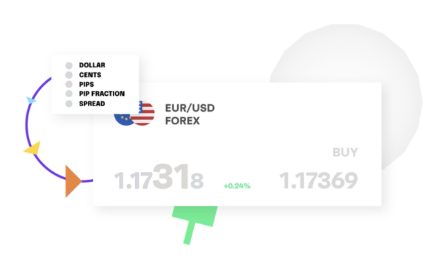Forex 101:
A beginner’s guide

The aim of forex trading is to speculate on currency price movements (i.e., whether they’ll go up or down). If you guess correctly, you can make a profit!
There are lots of factors that could influence price movements, such as inflation, politics and the economic health of countries, to name a few. If you think the price will go up, you can ‘go long’. If you think it will go down, you can ‘go short’.
What type of trader am I?
There are several different types of forex trading styles.
Which one are you?

The forex scalper
Forex scalpers hold smaller trades for shorter time frames – sometimes as short as a few seconds! Scalpers are technical analysts and are quick and ruthless during peak trading times. They also tend to commit a large portion of their day to trading.

The day trader
Day traders start trading as soon as the markets open, and they stop at the ring of the final bell. They’re also unlikely to hold a trade overnight to avoid any additional risk. Day trading is perfect for those who live by the now, but not the nanosecond.

The swing trader
More fond of long term investments, swing traders keep their trades for weeks, months or even years! Rather than get distracted by price fluctuations, they like to spend time understanding market fundamentals to ensure they buy at ‘swing lows’ and sell at ‘swing highs’ (or vice versa if going short!)

The news trader
Ready to act at a moment’s notice, news traders eat the global news for breakfast, lunch and dinner to feed their trading strategies. Reactive and proactive, they monitor breaking headlines and current events to see what could impact the currency markets. Once they’ve got their info, they can act!
Understanding analysis
Fundamental and technical analysis are essential
to making educated trading decisions. Here is a
breakdown of the two:
1 Technical analysis
Technical analysis is the study of past prices and patterns to assist in speculating on future price movements.
To help with this style of analysis, traders will use technical indicators, including:
Simple moving average. This is a common indicator of changes in price behaviour and helps traders get an idea of price trends.
Retail strength index. This helps to determine a market’s accelerating or decelerating direction and evaluates whether a currency is overbought or oversold, potentially signalling an imminent reversal.
Learn more about technical analysis with the help of our short videos.
2 Fundamental analysis
Fundamental analysis is the study of factors that drive valuation, such as economic and political trends and activity.
Fundamental analysis involves studying economic indicators and government policies to determine the intrinsic value of a currency. Once determined, you can make a trade based on whether you think a currency is undervalued or overvalued.
Learn more about fundamental analysis with the help of our short videos.

Market commentary
Keeping up with news and events is key to making better trading decisions and spotting the best opportunities.
Currency pairs
All forex transactions involve the purchasing and selling of two currencies, which are expressed as ‘currency pairs’. So, if you’re trading the US dollar against the British pound sterling, it’ll be expressed as GBP/USD.
The first listed currency in the pair (in this case, USD) is called the ‘base currency’. You are buying the first currency and selling the second one if you're "long".
The second listed currency in the pair (in this case, GBP) is called the ‘quote currency’. If you're "shorting" you're selling the first and buying the second.
The EUR/USD currency pair is the most liquid pair in the world, followed by USD/JPY.


Four musts for every
forex trader
Understand the markets
for both currencies
Have an understanding of both currencies you are trading as part of the currency pair.
Know their style and
strategy and be structured
This will help you to take emotion out of your trades and predetermine your entry and exit strategies. This approach to trading keeps trades consistent and emotions out of the deal.
Stop, evaluate and listen
Learn from each trade, what worked and what didn’t. Always listen to what your book, the experts and the market is telling you, never your heart.
Find the best broker in the business
You want a reliable trading platform, offering the latest technology, and the best in customer service to give you the best trading experience.
The chart of forex quotes
A forex quote is the price of one currency in terms of another currency in the pair. Both currencies will generate a price, and you’ll be able to see the spread between the two prices.
There are three charts that you can view these positions on:

Candlestick charts
Candlestick charts are the most commonly used charts as it gives traders the most informed view of the price movement.
These are useful when trading because they show four price points (open, close, high, and low) throughout the period of time the trader specifies.
If the time frame is set to 1 hour per candle then you will see the price movement accordingly, with the bulk of the candle being the open and closing prices and the “shadow” being the highs and lows within the same time frame.
Bar charts
Bar charts are helpful for reviewing the overall price ranges similar to the candlestick charts, but with a simpler design.
Line charts
Line charts are great for forex beginners, as the line connects one closing price to the next to show the general price movement of a currency pair.
Following the line going up or down, it makes patterns easy to identify and the market clearer to read.
Ready to go?
Open an account today and start your Eurotrader journey!
Risk warning: FX and CFD trading involves a high risk of loss.



